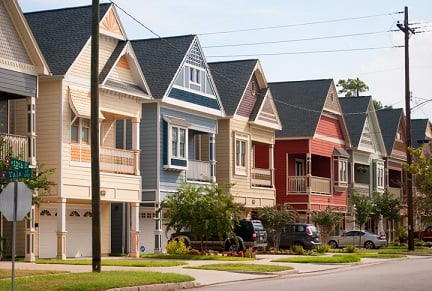Distressed home sales in the third quarter of 2017 fell to their lowest level since the same quarter of 2007

Distressed home sales in the third quarter of 2017 fell to their lowest level since the same quarter of 2007.
They accounted for 12.5% of all sales in the quarter, down from 13.5% in the second quarter and from 14.1% in Q3 of 2016 according to ATTOM Data Solutions.
"Distressed sales nationally are now the exception rather than the rule, and we would expect the distressed sale share to return to the pre-recession norm of single-digit percentages within the next year given the current downward trajectory," said Daren Blomquist, senior vice president at ATTOM Data Solutions.
Twenty percent (29) of the 146 metros analyzed showed increased distressed sales led by Corpus Christi, Texas (up 33%); Indianapolis, Indiana (up 30%); Cedar Rapids, Iowa (up 29%); Baton Rouge, Louisiana (up 25%); Provo, Utah (up 22%); and Oklahoma City, Oklahoma (up 22%).
"Distressed sales have become more localized in nature, with some of the biggest increases from a year ago in markets experiencing regional economic weakness or a natural disaster event that has triggered a jump in foreclosure activity," added Blomquist.
The figures also reveal that 66% of markets now have median home prices above their pre-recession levels. Fifty-five markets have new record highs.
All-cash buyers increased their share in the third quarter of 2017 at 27.2% compared to 26.7% a year earlier, although they were down from 28.2% in the second quarter of 2017.
There was also a fourth consecutive decrease in the share of institutional investors buying condos or single-family homes – from 2.9% of all home sales in Q3 2016 to 2.7% in Q3 2017.
They accounted for 12.5% of all sales in the quarter, down from 13.5% in the second quarter and from 14.1% in Q3 of 2016 according to ATTOM Data Solutions.
"Distressed sales nationally are now the exception rather than the rule, and we would expect the distressed sale share to return to the pre-recession norm of single-digit percentages within the next year given the current downward trajectory," said Daren Blomquist, senior vice president at ATTOM Data Solutions.
Twenty percent (29) of the 146 metros analyzed showed increased distressed sales led by Corpus Christi, Texas (up 33%); Indianapolis, Indiana (up 30%); Cedar Rapids, Iowa (up 29%); Baton Rouge, Louisiana (up 25%); Provo, Utah (up 22%); and Oklahoma City, Oklahoma (up 22%).
"Distressed sales have become more localized in nature, with some of the biggest increases from a year ago in markets experiencing regional economic weakness or a natural disaster event that has triggered a jump in foreclosure activity," added Blomquist.
The figures also reveal that 66% of markets now have median home prices above their pre-recession levels. Fifty-five markets have new record highs.
All-cash buyers increased their share in the third quarter of 2017 at 27.2% compared to 26.7% a year earlier, although they were down from 28.2% in the second quarter of 2017.
There was also a fourth consecutive decrease in the share of institutional investors buying condos or single-family homes – from 2.9% of all home sales in Q3 2016 to 2.7% in Q3 2017.



